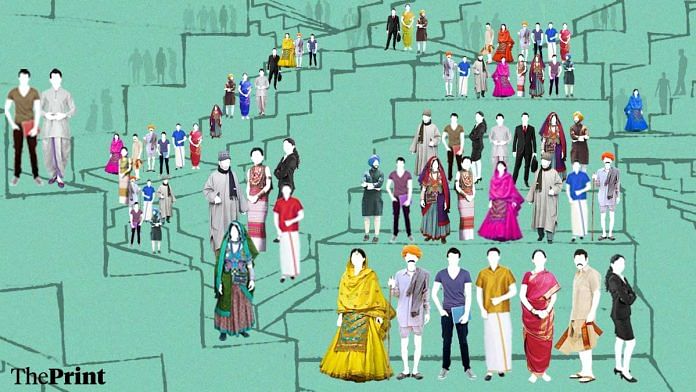Given the continuing growth and geographical spread of Covid-19 numbers, there must be doubt about whether the decennial population census can be held on schedule. Regardless, we have a good idea of what the numbers will be on 1 March: About 1.36 billion, according to the technical committee of the National Commission on Population. United Nations estimates are usually about 40 million higher than India’s official census numbers. By either count, India would have added about 150 million people during the 2011-21 decade, the lowest absolute increase since 1971-81.
In percentage terms, a 12.6 per cent increase (if it materialises) would be barely half the growth rates of the 1970s and 1980s, and by far the lowest since Independence. Especially with the number of childbirths per woman (the total fertility rate) having dropped below 2.2, or barely the replacement rate, India has crossed a critical population hump.
By these scenarios, the country’s population will not overtake China’s (currently 1.44 billion) for another decade, much later than earlier forecasts had said. India’s population should peak at about 1.6 billion shortly after the mid-point of the century, and decline after that. This compares with international projections of 1.72 billion by 2060, revised later to 1.65 billion after questioning by Sanjeev Sanyal (now of the finance ministry) and others. Further downward revisions are likely.
Also read: Modi is now using India’s market size as a strategic weapon, like China has done for long
The implications of these trends are worth considering. With a falling birth rate, the annual cohort of new school-going children has already started dropping from 25 million. At the other end, senior citizens will grow sharply in number. We will need fewer schoolrooms, but more hospitals, hospices, and old-age homes.
Next comes the urban challenge. Half the population in the south and west will be urban in 16 years. Devolution of more power to city governments cannot therefore be avoided for much longer. If the system of directly elected mayors is introduced, as exists sensibly in major Western cities, some heads of urban administrations will become as important as chief ministers. State governments will resist change, naturally. The birth of city-centric political parties (as the Shiv Sena once was) could create pressure from below. The Centre must push for change from above.
Accompanying that, fundamental notions of how cities are to be planned and managed must change: Density rather than sprawl to facilitate mass (rather than personal) transport, mixed-use areas instead of zoning to reduce commuting distances, sensible property taxation to finance development, the provision of public spaces and institutions while taming builders’ lobbies, abandoning building setback rules that waste land, and so on. Manufacturing industries larger than household enterprises will have to move out in order to clean up the air. Inefficient metro-based ports like Kolkata’s must shut down and release valuable real estate for city-centre renewal.
Then there is the north-south divide. In the quarter-century 2011-36, according to the technical committee, Bihar alone will add 50 per cent more people than all of the southern states put together. The share of Uttar Pradesh and Bihar in the total population will grow from 25 per cent to 30 per cent. But while population numbers move in one direction, incomes will move the other way. The south and west already enjoy per capita incomes that are three times the levels in the heartland. This multiple is bound to rise, and migration cannot bridge this income-population divide. Two specific challenges will arise. The minefield of fiscal transfers (which state should get how much) already confronts the current Finance Commission. In the future, changes in parliamentary representation will have to be addressed. If there is also a north-south political divide (the Bharatiya Janata Party dominant in the former, and regional parties in the latter), the risks of a rift are obvious, as interests diverge.
Action to avert this denouement must begin immediately. Governance standards must improve in the heartland, and caste become less preponderant. That can happen only with urbanisation. New cities, industrial clusters, and centres of excellence must emerge. Uttar Pradesh probably needs to be trifurcated. All-round connectivity to hinterland states has to improve. Convergence, so far a chimera, must be made reality.
By Special Arrangement with Business Standard.
Also read:Uttar Pradesh is India’s broken heartland, break it into 4 or 5 states







For the increasing aging population ,social security measures are needed.
Govt.supported old age homes with attached facilities for hygienic food,stay,comfortable in house
facilities .recreation etc can ensure them a dignified living.
Urbanization with suburban supportive structures as well mass public transportation can be thought of.
Plots can be sold for individuals for constructing their homes instead of encouraging high rise structures
in the semi urban areas.Rural infrastructure,industries ,education facilities should be developed to
minimize migration to urban centers.
One of the most significant articles on Print for a long time. The redistribution of seats in parliament in itself will be a nasty affair. Urbanization is a dire necessity. High-density urban centers could ease real estate prices, cleaner energy sources could become more affordable, the scope for land reforms would improve, education and health care coverage can be enhanced at a lower cost than is possible now. Hopefully, actions towards this end begin to be taken.